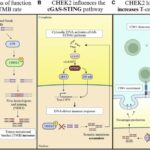
In the global quest for sustainable energy solutions, the building sector stands as one of the most critical arenas for innovation. Accounting for nearly 40% of worldwide energy consumption, a substantial portion of this demand stems from heating and cooling inefficiencies, particularly through window areas. Recognizing this challenge, a pioneering research team at the Korea Advanced Institute of Science and Technology (KAIST), led by Professor Hong Chul Moon, has unveiled a transformative smart window technology that promises to revolutionize urban energy management while delicately balancing the visual comfort of city dwellers.
This groundbreaking innovation, dubbed the RECM system—short for Reversible Electrodeposition and Electrochromic Mirror—represents a next-generation smart window platform. Unlike traditional passive windows, which respond only to environmental changes, RECM actively modulates both visible light and near-infrared radiation (heat) through electrically controlled responses. The ability to dynamically tailor light and thermal transmittance heralds a new era where windows become sophisticated agents in managing indoor climate and ambient light.
Central to the RECM technology is the sophisticated integration of electrochromic materials with reversible electrodeposition processes. Electrochromic devices are characterized by their capacity to change optical properties such as color and transparency in response to applied electrical signals. The RECM system utilizes a singular, structurally integrated electrochromic device that simultaneously regulates visible light and infrared heat energy, a feat rarely achieved with prior technologies.
.adsslot_45EqlYdI1T{ width:728px !important; height:90px !important; }
@media (max-width:1199px) { .adsslot_45EqlYdI1T{ width:468px !important; height:60px !important; } }
@media (max-width:767px) { .adsslot_45EqlYdI1T{ width:320px !important; height:50px !important; } }
ADVERTISEMENT
A chronic issue with earlier smart window designs, particularly metal deposition systems, has been the problematic glare caused by reflected light, which impairs pedestrian and urban visual comfort. The KAIST team has skillfully engineered a solution by employing electrochromic materials that not only adjust transmittance but also absorb reflected light. This dual-functionality mitigates glare, giving rise to what they describe as a ‘pedestrian-friendly’ smart window—one that considers both indoor energy efficiency and outdoor visual safety.
The RECM system operates through three distinct modes, each calibrated via precise voltage control. The first, Transparent Mode, allows maximum transmission of sunlight, facilitating passive solar heating during chilly winter months. This mode behaves like conventional glass but serves as the foundational baseline in the system hierarchy.
Transitioning to the second state, Colored Mode, electrical stimulation induces a redox reaction that forms Prussian Blue (PB) and DHV+• chemical species. Prussian Blue is a hallmark electrochromic compound known for its reversible color transformation between transparent and deep blue upon electrical input. The radical molecule DHV+• complements this effect, resulting in a darkened window that attenuates light transmission and partially restricts heat, all while preserving indoor privacy and controlling temperature passively.
The third and most advanced state, Colored and Deposition Mode, introduces a striking innovation. Here, silver ions (Ag+) undergo electrochemical reduction and deposit onto the electrode surface, creating a reflective metallic layer. Simultaneously, the electrochromic colored materials absorb much of the reflected light. This combination not only reflects substantial light and heat but also effectively suppresses the glare that commonly plagues prior smart window designs. The synchronized light absorption and reflection present a unique balance between energy conservation and pedestrian comfort in bustling urban environments.
Experimental validation of RECM’s energy-saving capability was rigorously conducted using a miniature model house. Under identical conditions with a conventional glass window, indoor temperatures soared to an oppressive 58.7°C within 45 minutes. By contrast, operating the RECM system in the Colored and Deposition Mode limited the indoor temperature rise to a significantly cooler 31.5°C, translating into an impressive reduction of approximately 27.2°C. This empirical evidence underscores RECM’s formidable potential in transforming typical building energy dynamics.
An intrinsic advantage of RECM lies in its active controllability through electrical signals alone, enabling instantaneous switching between modes responsive to seasonal changes, time of day, and users’ tailored preferences. This responsive adaptability distinguishes it from passive electrochromic windows which rely solely on environmental triggers, thus empowering occupants with granular control over their living and working environments.
Professor Moon aptly highlights that this technological advance transcends the conventional domain of smart windows, which have predominantly focused on visible light modulation. Instead, RECM uniquely combines active thermal regulation with glare mitigation, presenting a holistic approach to window design that passionately addresses both energy efficiency and urban livability. Such comprehensive optimization opens new frontiers for applications beyond static buildings, notably in mobility platforms such as vehicles and trains, where dynamic light and heat control can substantially enhance passenger experience and energy performance.
The findings from this cutting-edge research were published on June 13, 2025, in the prestigious journal ACS Energy Letters, attesting to its scholarly rigor and potential impact across scientific communities. The article, titled “Glare-Free, Energy-Efficient Smart Windows: A Pedestrian-Friendly System with Dynamically Tunable Light and Heat Regulation,” features contributions from Hoy Jung Jo, Yeon Jae Jang, Hyeon-Don Kim, Kwang-Seop Kim, and Professor Hong Chul Moon, epitomizing a collaborative spirit in advancing sustainable material technologies.
This work received vital support from the Nano & Material Technology Development Program under the National Research Foundation of Korea (NRF), funded by the Ministry of Science and ICT, alongside KAIST’s internal research efforts. Such backing underscores the strategic priority held by smart energy solutions within national innovation agendas.
Beyond its immediate implications, the RECM technology sets a new paradigm in smart facade design, emphasizing the dual imperatives of energy conservation and human-centric urban planning. As cities continue to densify and grapple with environmental challenges, integrating such intelligent window systems could become foundational in achieving net-zero energy goals and enhancing the quality of urban life.
The seamless blending of sophisticated materials science with practical architectural needs exemplifies the kind of interdisciplinary innovation necessary for the future. By enabling real-time customization of both light and heat transmittance, RECM smart windows empower occupants to mitigate energy waste while improving visual and thermal comfort. This research may well mark the advent of windows as active components in intelligent energy ecosystems rather than passive structural elements.
The prospect of extending RECM’s application beyond static buildings to dynamic transportation modes such as automotive and rail systems signals vast commercial and societal benefits. Integrating glare-free, energy-saving windows in vehicles could reduce cooling loads and enhance occupant comfort, significantly contributing to broader decarbonization efforts in the mobility sector.
In summary, KAIST’s RECM smart window technology represents a monumental leap in addressing two of the most stubborn challenges in urban energy and visual environments: heat ingress through windows and intrusive glare. By harnessing advanced electrochromic chemistry and reversible electrodeposition, this active and adaptable window system not only revolutionizes climate control within buildings but also preserves the external urban aesthetic and pedestrian safety. As it moves from laboratory validation toward practical deployment, this innovation invites a future where window technology harmonizes energy efficiency, human comfort, and city life in unprecedented ways.
Subject of Research: Not applicable
Article Title: Glare-Free, Energy-Efficient Smart Windows: A Pedestrian-Friendly System with Dynamically Tunable Light and Heat Regulation
News Publication Date: 13-Jun-2025
Web References: http://dx.doi.org/10.1021/acsenergylett.5c00637
Image Credits: KAIST Polymer Ionic Materials & Ionotronics Lab
Keywords
Smart windows, Electrochromic device, Reversible electrodeposition, Glare-free technology, Energy-efficient buildings, Thermal control, Prussian Blue, Dynamic light regulation, Near-infrared control, Urban energy savings, Building facades, Pedestrian-friendly design
Tags: advanced window systems for vehiclesdynamic light modulation systemselectrochromic materials in architectureenergy-efficient building materialsglare-free window solutionsheat-blocking window innovationsindoor climate control technologiesKAIST research and innovation in smart materialsreversible electrodeposition technologysmart window technologysustainable energy solutions in buildingsurban energy management strategies



